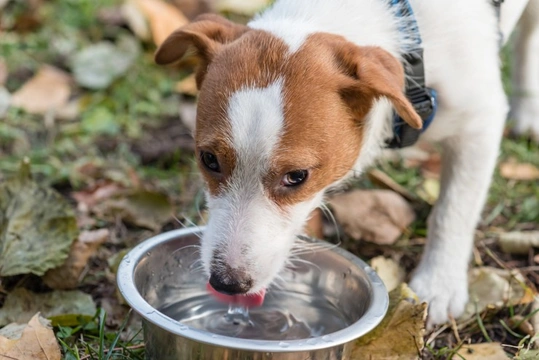
Best Water for Dogs: Filtered, Bottled, or Tap?
Water is of course the most common compound on earth, and the most vital necessity for life – and it is also something that we generally take for granted. If someone asked you off the top of your head to think about some different types of water, the question might seem like an oxymoron – but when you take into account tap water, mineral water, rain water, filtered water and so on, the question becomes a little clearer!
Many dog owners choose to provide filtered water for their dogs, or otherwise provide them with something other than tap water – and dogs can and do drink from all manner of water sources, from the purest, clearest of streams to the dirtiest of puddles!
If you are wondering what type of water you should provide for your dog or if there is a better choice than tap water, in this article we will look at some of the various options, and their pros and cons. Read on to learn more.
Tap water
Tap water is of course what most of us give to our dogs to drink, and British tap water that is clean and carefully monitored for quality is perfectly appropriate for dogs – although in some other countries, this is not the case.
One of the advantages of providing tap water for your dog is that British tap water has added fluoride, which helps to support healthy tooth enamel and dental health, reducing the risk of dental decay and similar problems in later life.
The benefits of adding fluoride to water when it comes to both canine and human teeth are undeniable – but of course, not everyone likes the taste, and some dogs prefer to drink water from other sources.
Hard or soft water?
Different regions of the UK have different levels of water hardness and softness – hard water has a high level of natural minerals compared to soft water, which makes it taste better, but that can also cause damage over time to the elements of electrical products like kettles and washing machines due to limescale.
Soft water tends to not taste as good, and also, misses out on trace elements of calcium and magnesium, which help to support health – and so if you live in a soft water area, you might want to use a filter for your dog’s drinking water to remove some of the sodium within it that can affect the taste, and keep an eye on your dog’s general condition and nutrition to ensure they get all of the necessary trace elements.
Filtered water
Filtered tap water is preferred by many people because it removes impurities and improves the taste of tap water, and of course, many people also give filtered water to their dogs. Using a filter jug or machine can help to remove the chlorine taste that tap water in some areas has, and also, to remove some of the sodium from soft water, as mentioned above.
It is important to remember that while filters can remove some of the trace elements and change the taste associated with tap water, they are not efficient at safely filtering sources of untreated natural water.
Rain water
Dogs seem to very much enjoy the taste of rain water over that of tap water, and if you are committed to saving water and collecting and properly storing rainwater to use as drinking water, this can also be given to your dog.
Again, the water should ideally be filtered to remove any contaminants, and rain water should be fresh and not stagnant.
One of the disadvantages of rain water is that there is no added fluoride in it, and so dogs that drink rainwater as their main source of hydration should have their teeth cleaned regularly with a dog-appropriate toothpaste that contains fluoride, or you may want to have fluoride supplements given to them under the direction of your vet.
However, some vets have observed that dogs that are prone to developing bladder stones and crystals – particularly male dogs that lead a fairly sedentary lifestyle – tend to suffer from fewer problems of this type when given exclusively rain water rather than tap water.
Bottled mineral water
Giving pure bottled mineral water to your dog in place of tap water is totally fine, bearing in mind the same caveats that apply to giving rain water when it comes to caring for their dental health.
Correlations between drinking rain water versus tap water in terms of potentially helping to control bladder issues are not reflected to the same extent in dogs that drink bottled water, however, and so this potential benefit doesn’t apply.
Natural sources of water
Streams, rivers, lakes, and ponds might all seem like the best possible sources of water for your dog to drink from, but these are actually more problematic than you might think.
Even a clean-looking source of water can be contaminated or dirty, posing a risk to your dog’s health – and issues such as blue-green algae and Weil’s disease that can lurk in natural water sources are an additional hazard.
It is better to take water from home out on walks with your dog, and avoid allowing them to drink from wild sources of natural water.



